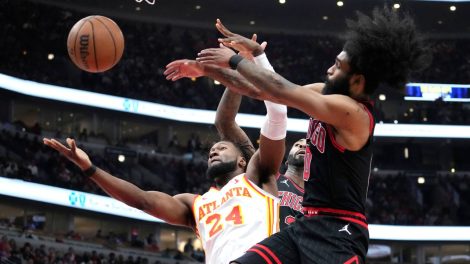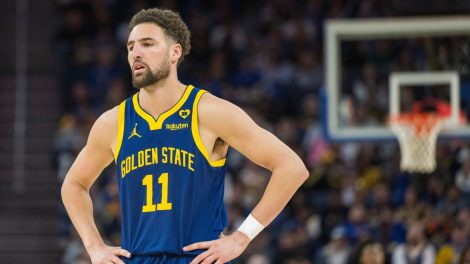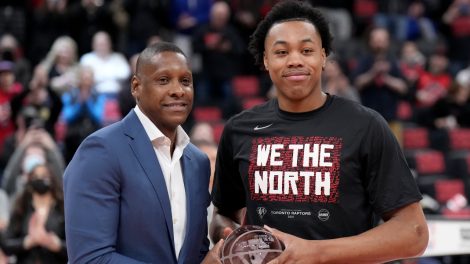Boasting 5.6 million Instagram followers, LaMelo Ball is unquestionably the most famous prospect in the 2020 NBA Draft.
And while fame and ability don’t always necessarily intersect, as a player who could potentially go No. 1 overall in this year’s draft, it would be foolhardy to think of Ball as just a celebrity and not actually a legitimate NBA prospect.
Still though, for someone who has been in the public eye since he was 13-years-old, Ball as a prospect is still something of a mystery because of circumstances involving his famous family and his bombastic father, in particular.
When you take away his unique family upbringing and circumstance, Ball still looks like a very good point guard prospect with a lot of upside in a similar vein to his older brother, and New Orleans Pelicans guard, Lonzo.
Here’s a breakdown of Ball’s game and why he’s among the most polarizing prospects in the 2020 draft.
Age: 19
Position: Point Guard
Height: Six-foot-seven | Weight: 181 lbs
2019-20 stats: PPG: 17.0 | RPG: 7.4 | APG: 6.8
Unconventional path to the draft
To understand Ball and why he’s so maddeningly difficult to pindown as a prospect despite his celebrity is to first understand the path he has taken to get to this point where he’s about to be drafted into the NBA.
His brother, Lonzo, had to deal with the meddling of their father, LaVar, during his journey to the NBA, but other than that he had a conventional path to getting selected No. 2 overall in 2017 as a five-star recruit — getting named to the McDonald’s All-American Game and then going on to star at UCLA for a year before making the leap to the NBA.
LaMelo’s path has been decidedly different and it veered, not-so-coincidentally, as the Ball family patriarch was making headlines for himself while Lonzo was at UCLA in 2017.
Remember that time when LaVar said Lonzo was a better player than Stephen Curry? That’s the period of time we’re talking about here and it all culminated in LaVar pulling LaMelo out of high school at Chino Hills as the elder-Ball disapproved with the school’s newly-appointed head coach, saying he would, instead, homeschool LaMelo.
This occurred right as LaMelo was about to enter his junior year of high school and, instead, saw him hire an agent and get his first taste of professional basketball playing alongside his other older brother, LiAngelo, in Lithuania for Prienai, where he averaged 6.5 points per game on just a little under 13 minutes of playing time per game — something that LaVar criticized the team for, resulting in the Ball family to pull out of Lithuania.
After this stint abroad, LaMelo returned to the States and once again played professionally, this time in a league called the Junior Basketball Association (JBA), a creation of LaVar as an alternative to the NCAA.
LaMelo played well, averaging a triple-double with an eye-popping line of 39.6 points, 14.6 rebounds and 11.5 assists per game helping lead his Los Angeles Ballers to the first-ever JBA championship.
After this year of professional hoops, however, LaMelo decided to return to high school basketball, but because he played professionally before, LaMelo was forced to play for SPIRE Institute and Academy, a prep school in Geneva, Ohio that competed outside of the Ohio High School Athletic Association and wouldn’t clash with restrictions related to amateur status. But in doing this, LaMelo wasn’t able to play in prominent AAU high school tournaments and wasn’t eligible to play in the McDonald’s All-American Game.
Remember now that LaMelo had already played professionally, had already hired an agent and was also was being featured prominently on the Ball family reality show, Ball in the Family, on Facebook Watch, so his amateur status and pathway to NCAA basketball was always going to be in doubt after he finished high school.
So then, in the absence of the NCAA, LaMelo took the professional path once again to get NBA-ready, this time taking advantage of an interesting program in Australia.
First launched in the 2018-19 season, Australia’s professional basketball league, the National Basketball League (NBL) has a program called NBL Next Stars with the specific aim of developing future NBA draft prospects. This is a program that was also made to attract bigger name talent to the NBL, even if it would be for a short period the player would be in the league, and it worked with LaMelo, who signed with the Illawara Hawks on June 17, 2019.
LaMelo ended up playing just 12 games with the Hawks as he opted to sit out the season after suffering a foot injury, deciding to prioritize recovering and preparing for the draft from home, instead. Despite this, he was still named NBL rookie of the year, with a solid line of 17 points, 7.4 rebounds and 6.8 assists.
Lots of uncertainty around him
Ball’s strange road to the NBA draft has made him one of the most mysterious prospects out there because it’s difficult to ascertain just how good the competition he was playing against was, particularly since he’s never stuck around long in one place.
For example, the numbers he put up with the Hawks in Australia look impressive, and winning rookie of the year is an impressive feat, especially because he did in so few games.
On the flip side of this, however, when you look at the Hawks you see a team that were the worst in the league this past season. With Ball in the lineup, they were just 3-9. So there’s an argument to be had that when faced with competition more comparable to his actual level and slightly better, he isn’t the kind of player who can elevate a team the way other top picks do — including Lonzo, who helped lead UCLA to a 31-5 record and a Sweet 16 berth in the 2016-17 college season.
With that said, 12 games is a small sample size and, who knows, maybe if Ball didn’t get hurt he’d have found a way to turn Illawarra around?
And therein lies the dilemma with Ball. You can talk yourself into believing he’s an outstanding prospect just as well as you can to say he’s a destined bust. The lack of good information about him makes him a maddening player to project at the NBA level.
[snippet id=4725691]
Exceptional size and vision
What we do know about Ball, however, is that he does appear to have the goods for a point guard prospect because of his size and his remarkable vision.
He certainly will need to bulk up, but at six-foot-seven he has an advantage at the one that other lead guards simply don’t have. His height gives him the ability to see the floor better than most of his positional counterparts and gives him access to different passing angles as well.
Now couple this with a strong handle and a comfort-level to pass the ball with either hand and you have a pure, pass-first point guard who’s going to cause a lot of problems — particularly if he can develop a nice little post-game a la Shaun Livingston to complement this skill package.
This is why Ball is considered an elite prospect. Point guards as big and skilled as him don’t come around too often and every time one does, the old Magic Johnson comparisons inevitably come into to play, for better or worse.
Lacks key NBA attributes
But while Ball is an elite passer, in terms of the most valued NBA attributes, he falls short.
The two most important things talent evaluators look for is athleticism and shooting ability and in these two departments Ball looks rather woeful, by NBA standards.
Ball lacks an explosive first step and unless he’s able to shake his man with a crossover move or by steering a guy into a well-placed screen, he’s not likely to see a lot of daylight attacking the rim.
Because of this Ball is often forced out to the perimeter where, if he’s hunting to score, he’s often caught pounding the air out of the ball as he tries to get open or, worse yet, will look to pull up from 30-feet out with 20 seconds still on the shot clock like he’s Curry — with the major difference being he’s a terrible shooter.
Last season with the Hawks, Ball shot just 38.9 per cent from the field, including a dreadful 27.9 per cent from three-point range on 6.6 attempts per game. Even more telling is the fact he was only a 70 per cent free-throw shooter — an indicator if a player might at least have the potential to turn into a good shooter at the NBA level is if a player shoots at least 75 per cent from the line.
Ball will have to find a way to improve his jumper if he’s going to stick at the next level, particularly because he likely isn’t even going to be able to find a path in the league as a defender, either.
Unlike Lonzo, who also has a shakey jumper, LaMelo either simply doesn’t have the instincts required or simply doesn’t try hard enough because he looked like a human sieve out there with Illawara as one of, if not, the absolute worst defender in the entire NBL last season.
There’s talent there to be tapped into for sure, but it looks like it might have to take a hell of a coach to find a way to both maximize Ball’s immense strengths while figuring out a way to shore up his glaring weaknesses.
[relatedlinks]









